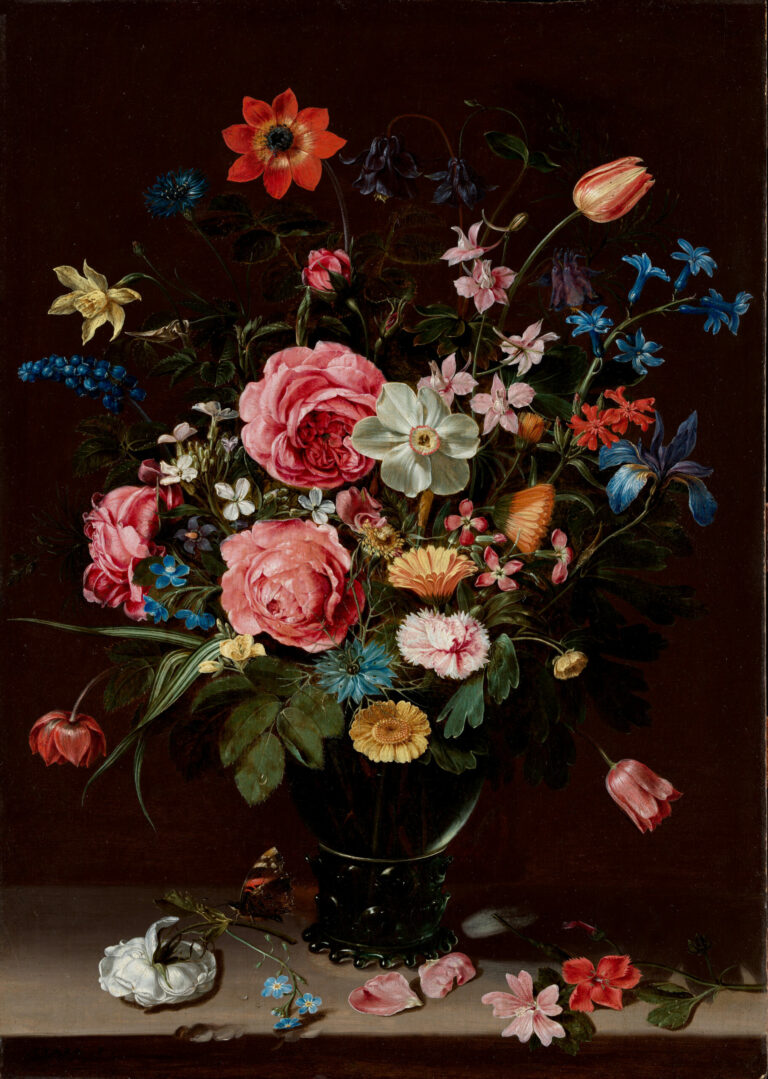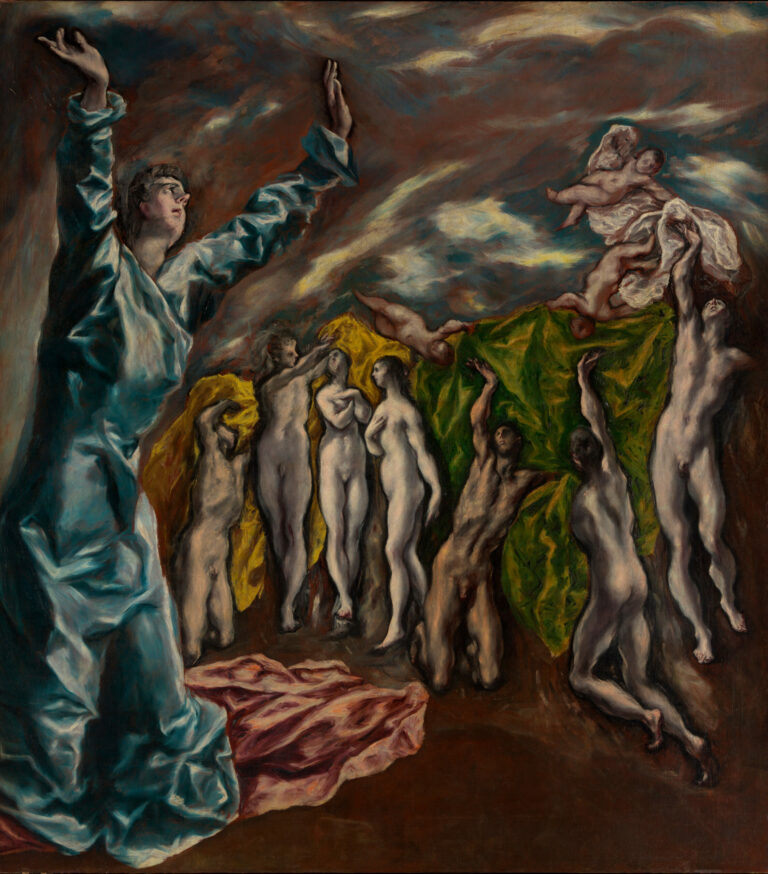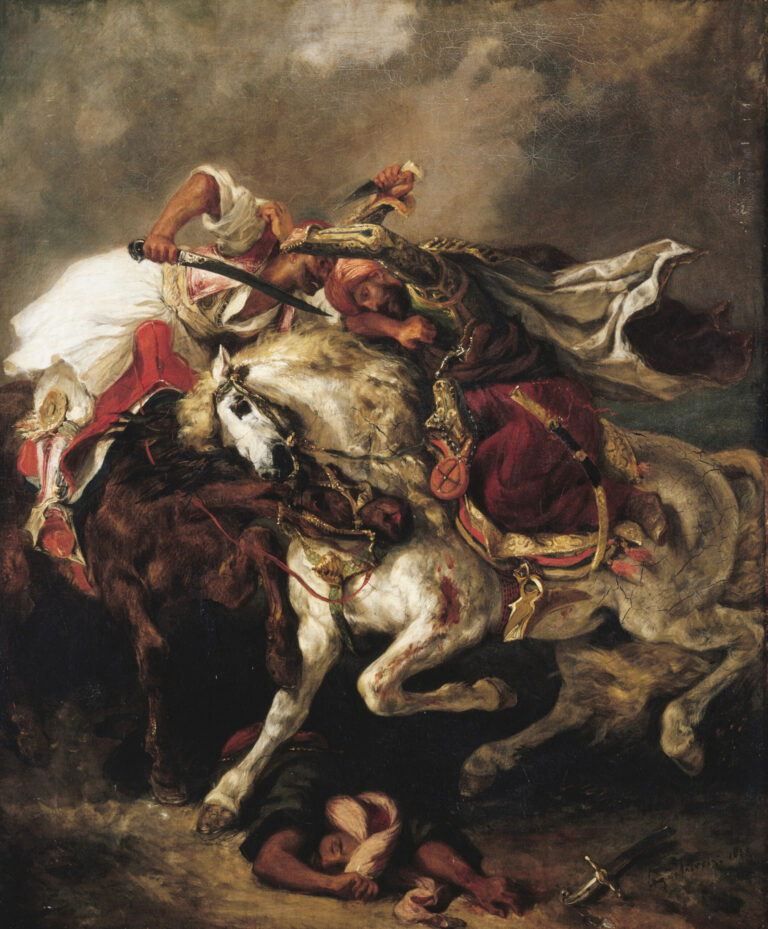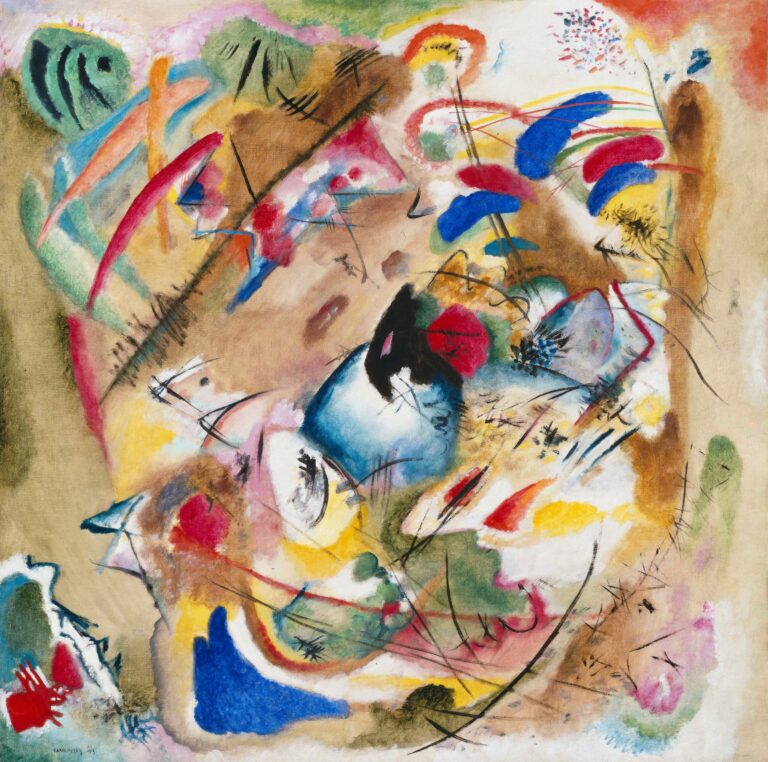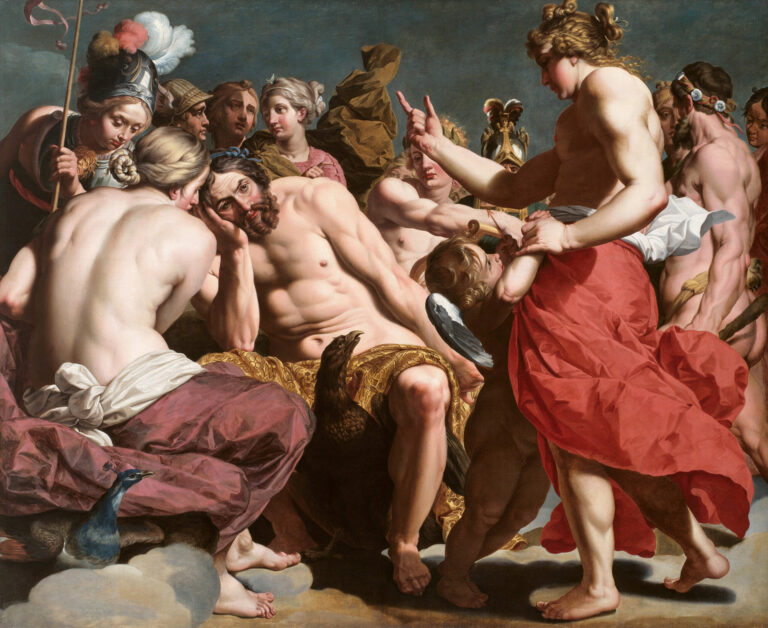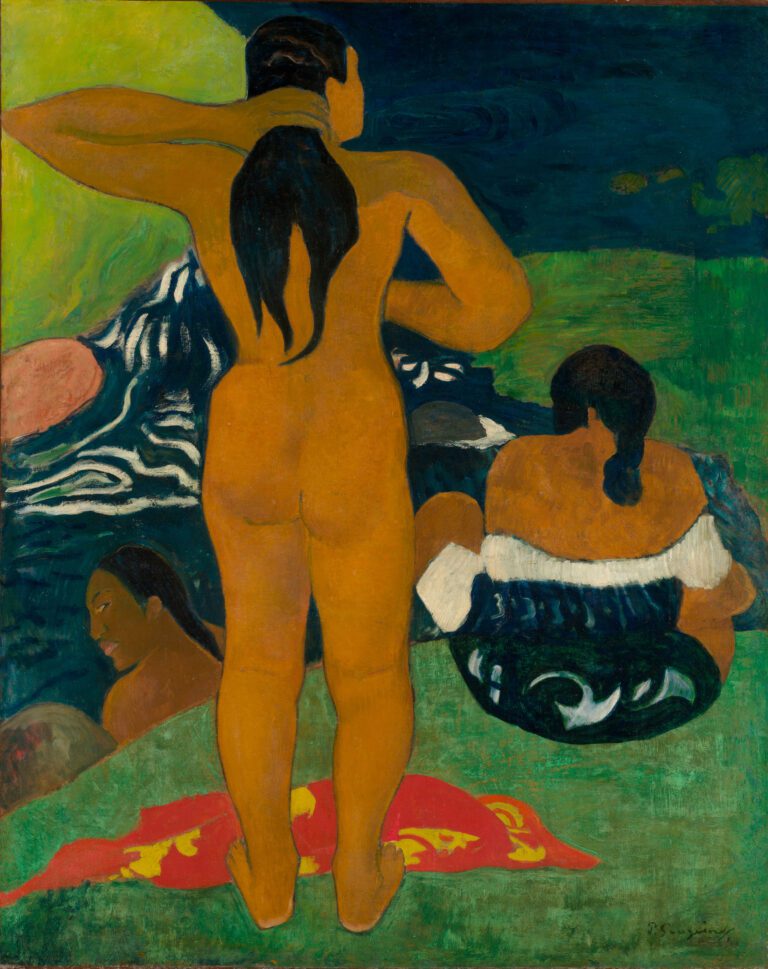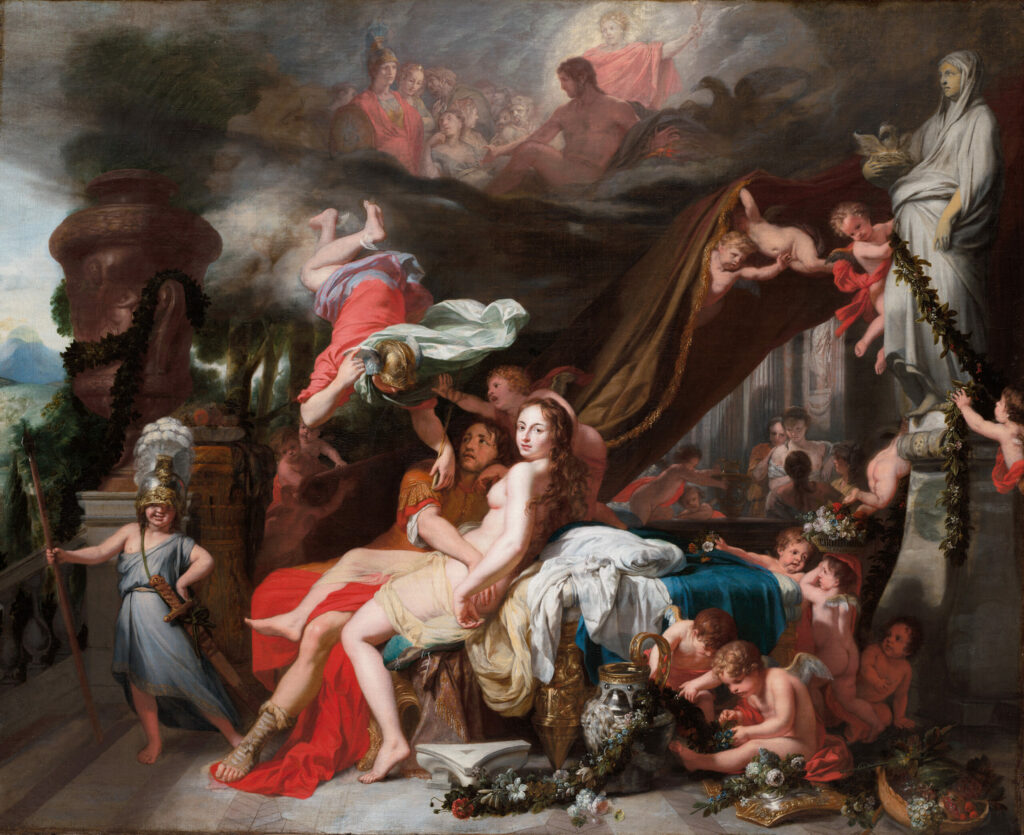
Hermes Ordering Calypso to Release Odysseus (c. 1670) illustrates the Homeric episode where Hermes, divine messenger, intervenes to free Odysseus from his golden captivity with the nymph Calypso.
Lairesse deploys a grandiose Baroque staging: at the center, Calypso, sumptuously adorned, passionately embraces the Greek hero while Hermes emerges from the clouds, draped in red. The luxuriance of the setting—precious fabrics, goldwork, fluttering putti—contrasts with the melancholy of Odysseus, nostalgic for his homeland. The monumental architecture and theatrical draperies reveal the influence of French classicism on Dutch art. The warm tones, dramatic lighting, and emphatic gestures of the figures create striking narrative tension between desire and duty, captivity and freedom. This work testifies to Lairesse’s mastery in translating human passions through the prism of ancient mythology.
Further Information
- Hermes Ordering Calypso to Release Odysseus, c. 1670, by Gerard de Lairesse
- 91.4 x 113.7 cm (36 x 44 3/4 in.)
- The Cleveland Museum of Art, displayed in Gallery 215, French, German, and Dutch
- https://www.clevelandart.org/art/1992.2
Gerard de Lairesse (1640-1711), nicknamed the “Dutch Poussin,” revolutionized Netherlandish painting by introducing the canons of French classicism. Born in Liège and trained in his father’s workshop, he settled in Amsterdam around 1665 where he developed an academic style inspired by Le Brun and Poussin. As much theorist as artist, he advocated for the hierarchy of genres and idealization of nature in his writings, notably “The Great Book of Painters” (1707). A specialist in large allegorical and mythological compositions, he rivaled French masters through his mastery of perspective and sense of decorum, durably influencing the Dutch school toward a noble and edifying art, far from the traditional realism of the Low Countries.

